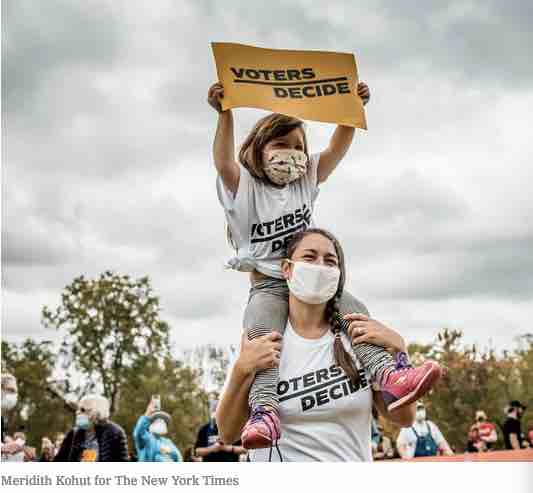In the run-up to Election Day, there was a lot of talk about the gender gap and the importance of the women’s vote for Joe Biden’s chances. In some polls, Mr. Biden was leading President Trump by as much as 23 points among likely female voters. The actual gap, according to an early CNN exit poll, may be closer to a far smaller 15 points.
Most of the help that female voters provided to Mr. Biden came from women of color, and especially from Black women. Despite all the talk of suburban women moving toward Mr. Biden, with the clear implication that these suburbanites were white, it was women of color in and around cities like Atlanta and Philadelphia who were most responsible for his victory. A majority of white women voted for Mr. Trump, by an 11-point margin.
True, they didn’t vote for him by as large a margin as did white men, and if college-educated, they tipped toward Mr. Biden. Still, given Mr. Trump’s well-known tendencies to denigrate women and his administration’s failure to structurally improve their communities, this depth of support for him may come as surprising.
Mr. Trump has tried to eliminate the Affordable Care Act, made court appointments that threaten Roe v. Wade, and reduced access to contraception. And he has vacillated on further relief to deal with a pandemic that has had a disproportionate impact on women’s employment and economic well-being.
In 2004, Thomas Frank published his best-selling book “What’s the Matter With Kansas?,” which argued that his fellow Kansans were voting against their economic self-interest because of hot-button cultural issues. Perhaps now we should be asking, “What’s the Matter With White Women?” Are they voting on cultural rather than economic issues? Are many simply following their husbands’ lead? For some, it would seem so.




